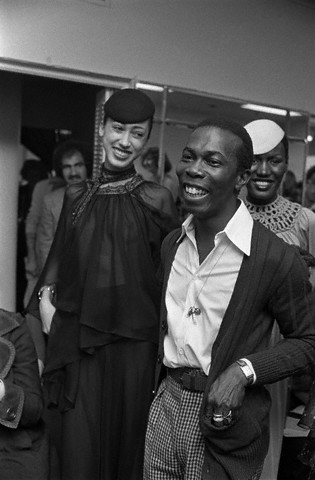
Nelson Clyde Barr
About
Scott Barrie (born Nelson Clyde Barr) was one of a group of brassy and vibrant black designers and models to establish themselves on New York's Seventh Avenue in the late 1960s.
Nelson Clyde Barr was born in Philadelphia in January 1946. He studied Applied Arts at the Philadelphia Museum College of Art and Fashion Design at the Mayer School of Fashion in New York, graduating 1965.
He took the new name of Scott Barrie when he started his fashion career.
The Look
The intermingling of culture and race on New York's Seventh Avenue in the 1960s brought a new sort of creative energy that challenged accepted standards. Barrie's models did not parade the catwalk with elegance; instead they boogied wildly and arrogantly, with a streetwise brashness. It was a testimony to the changing times that the clothes were accepted at the higher end of the ready-to-wear market. Describing himself in the 1970s as being midway between the crazy extremes of Zandra Rhodes and Herbert Kasper, Barrie quickly established himself as a designer of sexy, often outrageous clothes. His eveningwear was particularly noteworthy: skinny gowns sprinkled with pailettes and dangerously high splits, or jersey slips that slid tantalizingly over the figure. His innovative clothes included use of Acrilan, Celanese acetate knit, Jasco matte jersey and Lurex. He made emsembles of pull-on T-shirts with pants, wrap min dresses, décolleté shirt-tunic dresses laced down the front with cords or chains, long halter dresses, and elasticized pull-on strapless jumpsuits. Barrie's forté was the sensuous use of jersey, cut in inventive and unexpected ways, from which he created elegant and often risqué eveningwear.